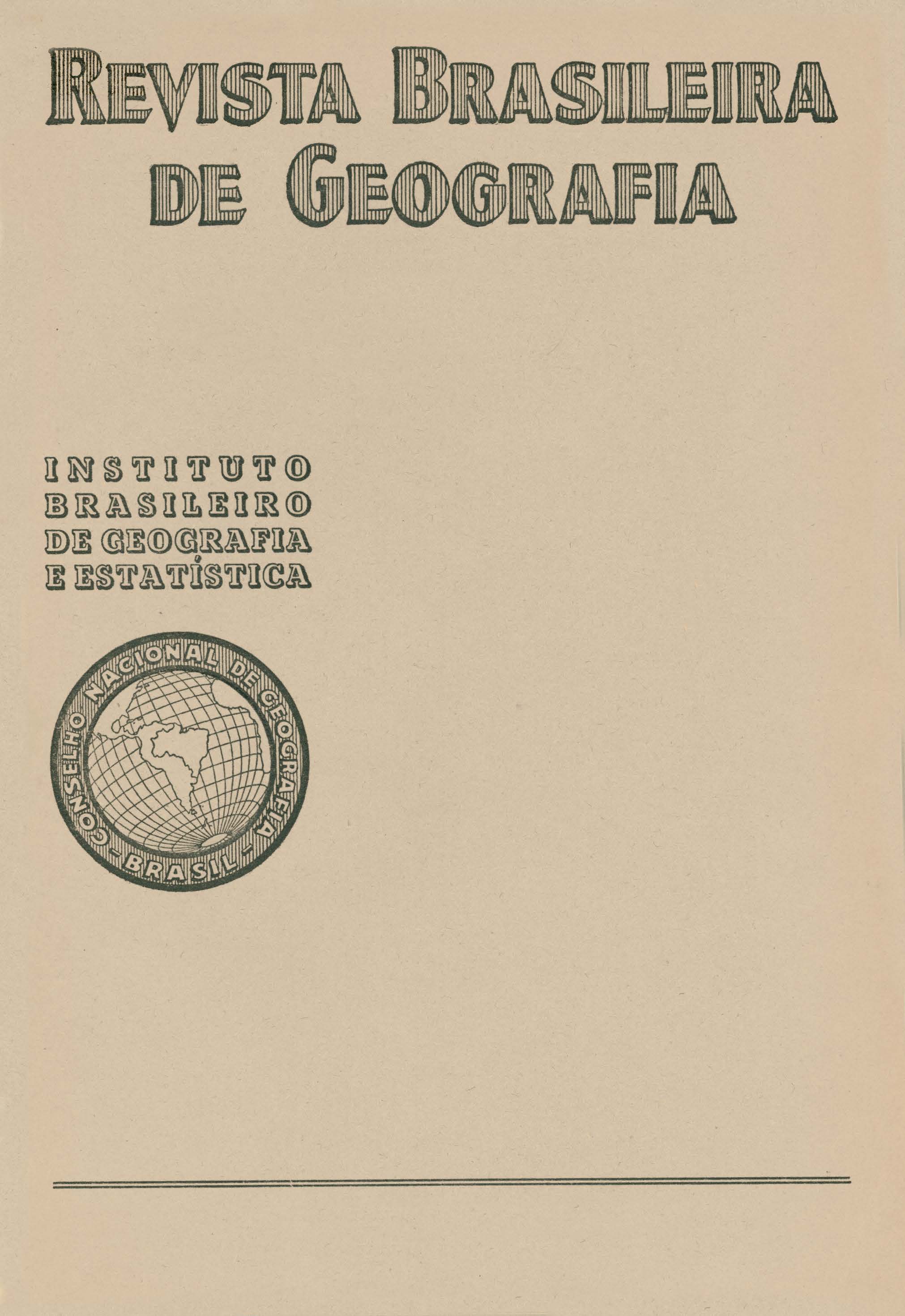Uma Projeção conforme adequada ao mapa geral do Brasil
Keywords:
Mapas;, Cartogafia;, Brasil.Abstract
Prof. Allyrio Hugueney de Matos, Assistant Coordinator of Cartography of the G. C. S., presents in his article a new cartographic projection, which offers the advantage of representing the Brazilian territory in a scale of 1:2 000 000 with smaller deformations than the projections used thus far.
The author begins by saying that the ordinary polyconic projection is the one mostly used because it is easy to calculate and because it is reduced to tables; but that, having as central meridian the· meridian 54• WG, the deformation of the meridian ares gradually increase starting at the Central Meridian, showing an increase of 5 % at the extreme east.
Besides this, the polyconic projection produces diversions in the variable directions or routes with its own direction or route, because, while the parallels remain in real greatness, the meridians suffer gradual increases.
Then the author affirms that the identical projection is more scientific, because any small figure on the map is similar to the real one, as the angles remain any the distances are proportional; whereas, as it happens for example with the identical projection used by the Geographic Department of the Army - which is the transverse Mercator projection, also called Gauss by the Germans, although Gauss may not have been its inventor -, the deformations are up to 2,5 o/o in distance and 6,3 o/o in area.
Then the author states that his attention was drawn by the identical conic bipolar oblique projection, recently appearing on a map of the Americas published by the American Geographical Society in its magazine.
The author has studied an identical monopolar oblique projection, placing the pole of the cone approximately on the line which connects the littoral of Rio Grande do Norte with Morro dos Quatro Irmãos in the State of Mato Grosso, which is one of the greatest geodesics of the Brazilian territory, measuring approximately 28°.
His studies gave a satisfactory result, the projection was calculated as it is shown on the enclosures accompanying this article; enclosure n. • 1 presents the pro file o f Brasil in a scale of 1:20 000 000 and the lines of equal deformation, which reach a maximum of 1,72 %; enclosure n°2 is a graphic which makes it possible to see the deformation on any point on the map; and enclosure n°3 is a relation o f the co-ordinates o f the net o f meridians and parallels.






